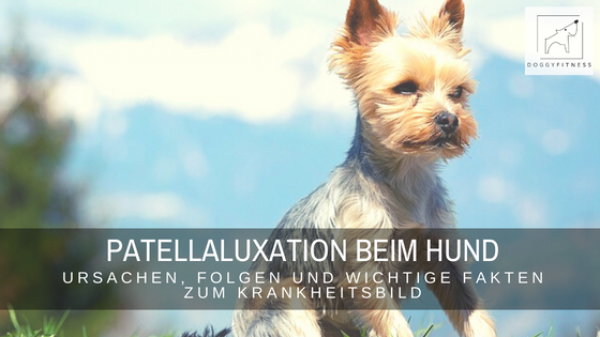Most dog owners have heard of patellar luxation in relation to joint disease in dogs. It is safe to assume that everyone has also frequently seen dogs with patellar luxation – even if not consciously. In fact, it is one of the joint diseases that is very often overlooked. Patellar luxation dog causes
Probably the most noticeable sign of patellar luxation the shaking of the hind legs while walking is often dismissed as a tic of the dog. Or not even consciously perceived. Because that’s what the dog has always done. The signs of patellar luxation start to appear from a young age, which might make the dog owner think that it is an individual peculiarity of his dog. But far from it.
But let’s first take a look at the anatomy of the knee joint in order to better understand patellar luxation afterwards.
The anatomy of the knee joint patellar luxation dog causes
The knee is your dog’s most complex joint. It consists of the thigh, the tibia, the fibula and the kneecap. To provide stability to this complex joint with its various bones, it is stabilized by various components. These include the joint capsules, the menisci, various muscles and the patellar ligament. There are also two lateral ligaments that prevent lateral bending and two cruciate ligaments that stabilize the knee forward and backward.
The kneecap plays an important role. It is a sesamoid bone and is embedded in the patella tendon. When the knee is extended and bent, it slides in the gliding groove of the femur. Patellar luxation dog causes
What happens with a patellar luxation?
In a healthy knee joint, the kneecap slides in the glide groove when the leg is bent and extended. In patellar luxation, on the other hand, it slips out of the glide groove either laterally or centrally during movement.
One reason for this may be that the glide channel is not deep enough. Another cause may be that the kneecap is too small or too large. As a result, it does not fit properly into the guide. In addition, connective tissue structures such as ligaments, tendons and the joint capsule are often too weak and provide too little support.
In dogs, 3/4 of the time the patella slips medially. This usually happens with small dogs. At 1/4, it slides outward, i.e. laterally. This mostly affects large dogs.
Patellar luxation is classified into four degrees of severity. In this article I have already summarized the most important facts about it:
THE 4 DEGREES OF SEVERITY OF PATELLAR LUXATION
What are the consequences?
Dislocation of the patella has far-reaching and, above all, permanent consequences. If the kneecap repeatedly jumps out of the sliding groove during movement, it causes lasting damage to the joint. Osteoarthritis develops and inflammation may occur in the joint. Patellar luxation dog causes
Depending on the severity, deformities may even occur. Dogs spare the affected leg and thus lose a lot of muscle. In addition, there are incorrect loads, which leads to tension in the musculature and overloading of the other joints. The tendons and ligaments shorten, the joint cartilage suffers massively and the joint fluid becomes thinner and thinner.
The mobility of the joint is more and more limited. Affected dogs experience pain when the kneecap pops out and also pain during movement. As a result, they are reluctant to use the leg. They are in a vicious cycle.
Patellar luxation: Causes
Patellar luxation causes
The most common cause of patellar luxation is that it is inherited. However, it can also develop and be aggravated during the young dog’s growth phase due to improper diet or excessive exercise. In a few cases, trauma can also cause patellar luxation.
Which dogs are affected?
It has been proven that females are affected more often than males. In most cases, it is small dog breeds that suffer from patellar luxation. Commonly affected breeds include Chihuahua, Jack Russell Terrier, Yorkshire Terrier, Small and Miniature Poodle, Pekinese & Fox Terrier.
Larger breeds that are more frequently affected by dislocation of the patella include Appenzeller or Bernese Mountain Dog, Chow Chow, Shar Pei and Cocker Spaniel.
Wondering how to recognize patellar luxation? I have already summarized them in a previous article: THE MOST IMPORTANT SYMPTOMS OF PATELLAL AUXATION and you can read them there.
All the love, Tina
Patellar luxation causes, Patellar luxation causes, Patellar luxation causes, Patellar luxation causes, Patellar luxation causes.
Dieser Beitrag ist auch verfügbar auf:
Français (French)
Deutsch (German)
Español (Spanish)
















